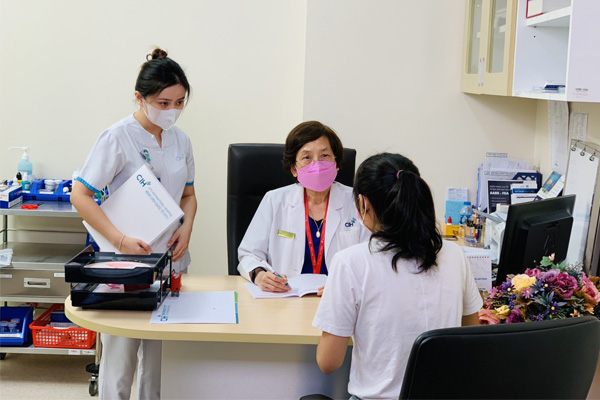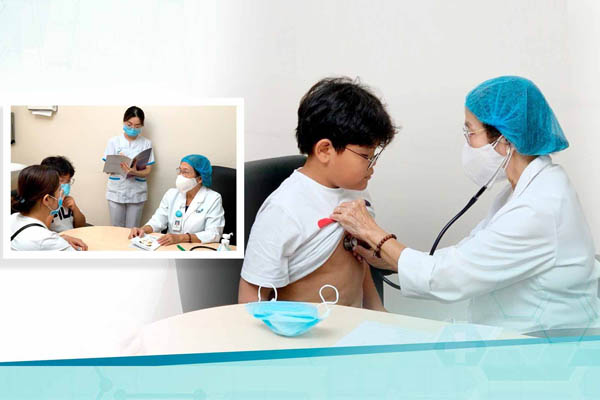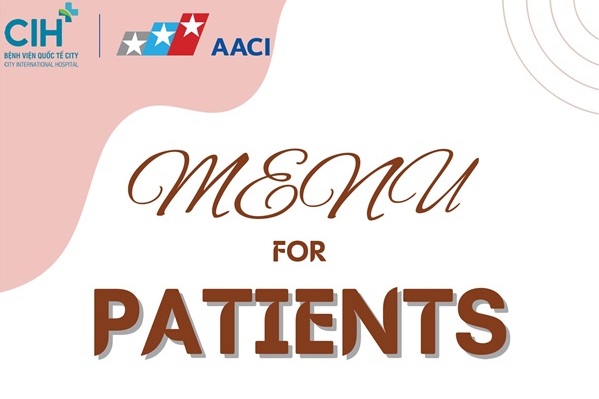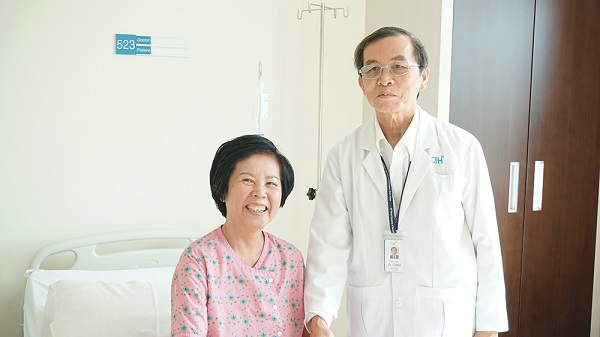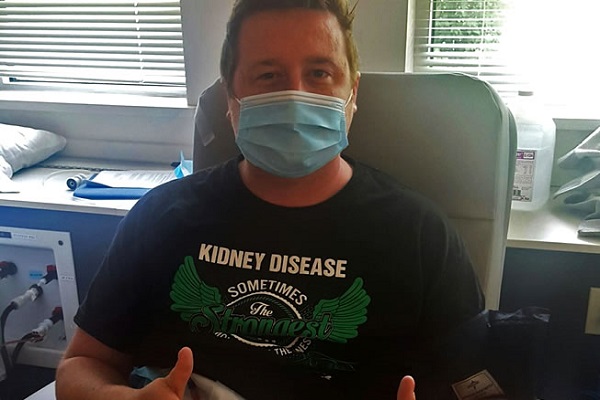As a year ago, anti-tuberculous chemotherapy is the mainstay of treatment for spinal TB. To date, recurrent complex spinal tuberculosis accompanied with Extensive Abscess, treatment procedures become more complex
A surgical treatment of complex spinal tuberculosis was performed successfully by City International Hospital's team of orthopedic and neurosurgery specialists , led Dr. Vo Van Si, Spine Surgeon
March 19, 2019, female patient N.N.A (40 years old, Ngu Binh District, Ho Chi Minh City) referred to our hospital complaining of the 18-month history of progressive back pain radiating to both thighs, anorexia, weight loss. It was associated with low-grade fever, loss of appetite and ended with the inability to walk. Twelve months before she was referred to our department, patient N.S was diagnosed with lumbar spinal tuberculosis and was empirically started initially anti-tuberculosis drug therapy was initiated with four agents. This gradually worsened, and since fever also appeared, her back pain and fever gradually improved, but from 5 months prior to the referral, reduced sensation in both legs and a sense of weakness appeared, and the patient became incapable of walking unaided. Her symptoms subsequently progressed further, and she was examined in our department.
On examination, she looked pale and uncomfortable, A magnetic resonance imaging (MRI) of the lumbar spine confirmed these findings of spinal tuberculosis in four vertebral bodies from the lower thoracic to the lumbar spine L1-L2 and D11-D12, and left retroperitoneal abscesses extending to the left lower back/flank subcutaneous tissue and into the epidural space. Though she had no neurological symptoms, given the extension of the abscess, both orthopedic and neurosurgery specialists were consulted for surgical drainage of abscess.

Preoperative MRI sagittal section
Since the tuberculous spondylitis had resolved one year after use of tuberculostatic agents, treatment regarding the use of these agents was discontinued. One p.m. the same day, a surgical team of City International Hospital's orthopedic and neurosurgery specialists, led by Dr. Vo Van Si, Spine Surgeon decided to proceed with surgery to prevent the significant neurological sequelae and need for more invasive surgical interventions.After one half hour, The evacuation of pus irrigation of the area was done including multiple pockets of pus collection through the paravertebral muscles.
Nowadays, there have been few reports about the management of lumbosacral TB and there is no established guideline for its treatment. This case explores even more challenges after the failure of 12-month anti-tuberculous drug treatment, progressive deformity, neurological impairment or presence of extensive abscess with or without epidural involvement
The goals of surgery are neurological deficit, spinal deformity with instability or pain, failure of drug treatment and bulky paravertebral abscess.When debridement is performed optimally, this procedure is a safe approach that allows bone fusion, direct debridement of the paravertebral and intra-spinal focus of infection and able to increase the effectiveness of drug therapy.
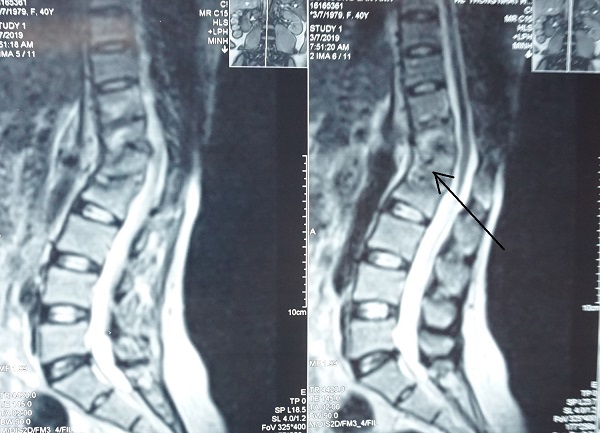
Computed tomography imaging shows affected vertebral bodies
Spinal tuberculosis is a destructive form of tuberculosis. It accounts for approximately half of all cases of musculoskeletal tuberculosis. Spinal tuberculosis is more common in children and young adults. The incidence of spinal tuberculosis is increasing in Vietnam. The incidence of multi-level non-contiguous vertebral tuberculosis occurs more frequently than previously recognized.Non-specific signs and symptoms make the clinical Diagnosis in the initial phase of the disease a real challenge to physicians Backache is the most common of all symptoms. Constitutional symptoms such as loss of weight, loss of appetite, fever.
This clinical entity is socio-economic related, occurring more often in developing countries due to its endemic nature in underprivileged sections. The incidence of atypical clinic radiological presentations of spinal TB is on the rise despite the improvement of public health policies and the availability of effective anti-tubercular drugs, Improper dosing, inadequate duration of treatment, and inappropriate selection of candidates for chemotherapy has not only resulted in the resurgence of TB but also led to the most dreadful consequence of multidrug resistant strains. Delay in the diagnosis and initiation of treatment increases the risk of complications such as neurological deficit, abscesses and fistula.

Dr. Vo Van Si, Spine Surgeon following up the patient
In this particular case of patient N.A, the infection was limited to the peridiscal area. We performed surgery through an anterior abdominal approach for decompression of the spinal canal, debridement, material collection and stabilization of the spine.
Spinal tuberculosis is a destructive form of tuberculosis. It accounts for approximately half of all cases of musculoskeletal tuberculosis. Spinal tuberculosis is more common in children and young adults. The incidence of spinal tuberculosis is increasing in Vietnam. The incidence of multi-level noncontiguous vertebral tuberculosis occurs more frequently than previously recognized. Common clinical manifestations include constitutional symptoms, back pain, spinal tenderness, paraplegia, and spinal deformities. The major causes of recurrence included the appearance of drug-resistant strains, non-standard postoperative chemotherapy, incomplete lesion debridement, failure of spinal stability reconstruction, poor nutritional status, accompaniment by tuberculosis in other organs, and inappropriate timing of the operation.
Surgery may be required in selected cases, e.g. large abscess formation, severe kyphosis, an evolving neurological deficit, or lack of response to medical treatment. This case report highlights the importance of early diagnosis and early treatment, prognosis is generally good.
For appointment or more information about the services provided our Department, please contact:
Trauma and Orthopedics
- Nurse Station: (8428) 6280 3333, ext. 8214
- Patient Service: (8428) 6280 3333, ext. 8213
City International Hospital
- Operator: (8428) 6280 3333, ext. 8035 or 8036
- Add: No. 3, 17A Street, Binh Tri Dong B Ward, Binh Tan Dist. (Next to AEON Mall Binh Tan). Ho Chi Minh City.
- Site: https://cih.com.vn/en/
- Email: This email address is being protected from spambots. You need JavaScript enabled to view it.













